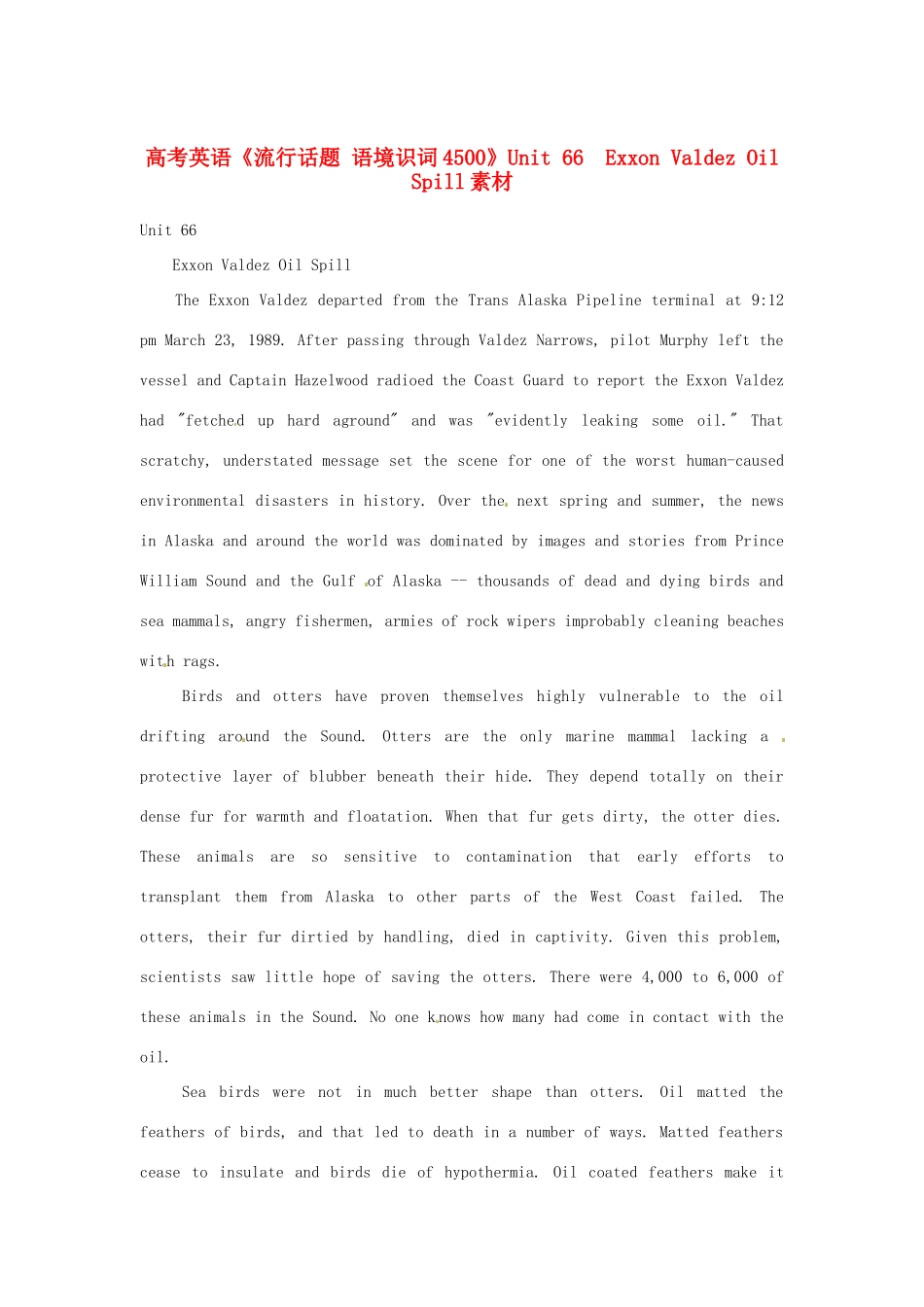高考英语《流行话题 语境识词 4500》Unit 66 Exxon Valdez Oil Spill 素材Unit 66 Exxon Valdez Oil Spill The Exxon Valdez departed from the Trans Alaska Pipeline terminal at 9:12 pm March 23, 1989. After passing through Valdez Narrows, pilot Murphy left the vessel and Captain Hazelwood radioed the Coast Guard to report the Exxon Valdez had "fetched up hard aground" and was "evidently leaking some oil." That scratchy, understated message set the scene for one of the worst human-caused environmental disasters in history. Over the next spring and summer, the news in Alaska and around the world was dominated by images and stories from Prince William Sound and the Gulf of Alaska -- thousands of dead and dying birds and sea mammals, angry fishermen, armies of rock wipers improbably cleaning beaches with rags. Birds and otters have proven themselves highly vulnerable to the oil drifting around the Sound. Otters are the only marine mammal lacking a protective layer of blubber beneath their hide. They depend totally on their dense fur for warmth and floatation. When that fur gets dirty, the otter dies. These animals are so sensitive to contamination that early efforts to transplant them from Alaska to other parts of the West Coast failed. The otters, their fur dirtied by handling, died in captivity. Given this problem, scientists saw little hope of saving the otters. There were 4,000 to 6,000 of these animals in the Sound. No one k nows how many had come in contact with the oil. Sea birds were not in much better shape than otters. Oil matted the feathers of birds, and that led to death in a number of ways. Matted feathers cease to insulate and birds die of hypothermia. Oil coated feathers make it impossible for the birds to fly to safe areas. Birds exhaust themselves trying to stay afloat after oil destroys the water repellency of their feathers. Rescuers were having a difficult time getting to the birds to catch them on rocky beaches. In order to rehabilitate one bird successfully, rescuers needed 150 gallons of water at 104 degrees. The obstacles standing in the way of the job were intimidating. Animals living in the nearby forests and roam onto the tidelands in search of food. Mink, land otters and bears could be harmed. There are similar fears for bald eagles, another scavenger. The eagles have already begun preying upon the seabirds killed or injured by oil. Scientists knew that the 11 million gallons of oil that had spilled into the Sound was likely to kill thousands of birds and probably hundreds of marine mammals. But what they didn't know is what it would do to the microorganisms, the invertebrates and the fish that make up more than the va st majority of life there. What will become of the portions o f the crude oil that are dissolved in the water is harder to predict. Where these chemicals concentrate, they would devastate the existing ecosystems, scientists sa id. But where they are diluted, the problems lessen.

